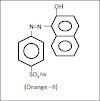TNT (trinitrotoluene)
TNT is a synthetic explosive, so firstly we have to know about explosives.
Definition: “the explosives are substance which is used for destructive purpose”.
Or
“Explosives are substance, when subjected to a mechanical or thermal decomposition; undergo rapid production of large amount of heat and gases”.
Due to a high temperature and pressure is applied to the surroundings giving a destructive effect.
Uses of explosives:
Generally explosives are used for making tunnels, mining of coal, for making dams, and also used for making roads in mountain regions.
CLASSIFICATION:
Explosives are classified as shown below,
1. Low or deflagrating explosives: low or deflagrating explosives are explosives which are quickly not undergo the explosive reaction; they only burn. Reaction rate is slow compare to the high explosives.
2.
High or detonating explosives: high
explosives are substance which are quickly undergo on reaction; reaction rate
is very high compare to the low explosives. High explosives are sub-divided
into two types. (A) Primary high explosives, (B) secondary high explosives.
(A)
Primary high explosive: Primary high
explosives are very sensitive; primary high explosives are used for initiate
the explosion of less sensitive secondary explosives. Primary high explosives
are very dangerous to handle. Examples: Tetracene, pinol, lead styphnate,
mercury fulminate, lead azide.
(B)
Secondary high explosives: secondary
high explosives are insensitive to flame and mechanical shock. These explosives
are contains very high energy in the form of gases and pressure. It is give a
very great violence when they initiated by primary explosives.
It is raised up a detonation pressure from 2500 to 350000 atmospheres; and detonation pressure is raised from 15000c to 55000c. Examples: tetryl, ethylene-dinitramine, dinitro-toluene, cyclonite, TNT, picric acid.
TNT was first synthesized by German chemist Julius wilbrand in 1863. But at that time they don’t know about TNT’s explosive properties they was only have knowledge of TNT’s dye property. A use of TNT as explosive was not found many years, because of less sensitivity of TNT as compare to other explosives.
After 30 or around 30-31 years it’s explosive properties were first discovered by another German chemist Carl haussermann in 1891. It was then used as an explosive by German and us respectively.
Here is the basic information of the scientist who gives a contribution of TNT’s discovery.
Julius Bernhard friedrich Adolph wilbrand[wikipedia]
He was a German chemist, Julius Bernhard friedrich Adolph wilbrand obtained TNT from nitration of toluene.
Born: 22august 1839, in Giessen, Germany.
Died: 22June 1906.
Education: university of Giessen.
Nationality: German.
Picture:
Born: 1863
Died: 1936
Nationality: German.
Here is the picture of German chemist Carl Haussermann during discovering explosive properties of TNT.
Picture:
· Pure TNT was first synthesized by another German chemist Paul Hepp in 1880.
· After that the explosive properties of TNT was discovered by Carl Haussermann in 1891, they also find a way to produce TNT as an industrial scale, they also suggest TNT as a military use.
Why TNT is most important and
powerful high explosive?
·
TNT is very less sensitive or we can say not
sensitive, therefore it is very safe to handle during production and storage.
·
TNT does not react with metals so it can be not
going to make unstable compound, so it is safe to store.
·
TNT does not absorb moisture.
·
It has high shattering action.
Chemical profile:
Chemical
properties:
IUPAC name: 2-methyl-1, 3, 5-trinitrobenzene.
CAS number: 118-96-7
Common name or other name: TNT
Structure:
Molecular formula: C7H5N3O6
Molecular weight: 227.13 gm/mole.
Melting point: 80.350C or 353.50K.
Boiling point: 2400C or 513.1K.
Solubility: in water 0.13 gm/lit at 200C.
Soluble in organic solvents like benzene, ether, acetone, pyridine etc.
Color: pale yellow.
State: crystalline solid.
Odor: odorless.
Specific gravity: 1.65
Synthesis of TNT:
Generally TNT is prepared three steps of nitration of toluene.
Statement:
The reaction of toluene with the presence of 28% HNO3, 56% H2SO4, and 6% H2O produce a mixture of ortho-nitrotoluene and pera-nitrotoluene.
After that reaction of these mixtures [o+p-nitrotoluene] in the presence of 32% HNO3, 61% H2SO4, and 7% H2O gives 2, 4-dinitrotoluene.
Then the reaction of 2, 4-dinitrotoluene with 49% HNO3 and 49% H2SO4 lead to get our final product 2,4,6-trinitrotoluene.
The crude TNT is washed with ammoniated solution of sodium sulphite. Ammonia neutralizes residual acids, white sulphite removes the unsymmetrical TNT’s[2,3,4-,2,4,5-,and 2,3,6-TNT’s] as water soluble sodium dinitro-sulphonates then 2,4,6-trinitrotoluene is crystallized by rapid action of cold water.
Chemical reaction:
Decomposition of TNT:
Uses or merits of TNT:
·
TNT is mainly used in the manufacture of high
explosives for shell and air borne demolition bombs.
·
When TNT is mixed with ammonium nitrate, it
forms the explosive amatol.
·
Mostly TNT is used as explosive for military,
industrial and mining purpose.
·
Pelletized TNT is used in the technique of
displacing and detonating nitroglycerin in hydraulically induced fractures followed
by wellbore shots.
·
TNT has a less value compare to the other
explosives like nitroglycerin, because of their insensitivity to the shock and
friction. So it is safe to handle and it is reduced risk to accidental
detonation compare to other explosives.
·
We can use TNT in wet environment also because
of TNT is not absorb water and also it is not dissolve in water.
·
In case of ingestion of TNT in human body
through the inhalation of dust of TNT and dermal sorption; it is give a very
serious health effects like liver necrosis and aplastic anemia.
·
TNT can be a cause of cancer if it is enters in
our body.
·
Animal study results indicate that inhalation or
ingestion of large amount of TNT may becomes a cause of liver, blood, immune
system and reproductive damage.
·
High amount of TNT in air is becomes a reason of
some dieses like anemia, liver function abnormality, skin irritation and
cataracts.
[અસ્તુ:]











![TNT[trinitrotoluene]-2,4,6-trinitrotoluene-IUPAC,structure,chemical properties,physical properties,history,synthesis,uses,toxicity-by study everything.](https://blogger.googleusercontent.com/img/b/R29vZ2xl/AVvXsEguQhJ8XKR-lzjmdZ6Tb3GnTgrK2_vDyw5KAoxMAzKEMFpBqkRJwr0V8iGVwxRNsBXGDKcm1ChoNLkrXlMrPvtTEtw9I5eH2vBMQ3BRxPFkQ_n8Vf9XMZF3H9nFgYtuiVj1T0yOsZl27HD2WRWxsCy1P1_IM262s_zR3OPzDy_5JrBM3UxZhPKe_XK61w/w100/classification%20of%20explosives..JPG)
![ATENOLOL [TENORMIN] - medicinal drug -study everything.](https://blogger.googleusercontent.com/img/b/R29vZ2xl/AVvXsEgGTsBGKNaP_tE51nfYj2h3fKdZpO02gO5BeGfItb45xXsb4Gs_pu7ojGb8kc5WTo3e8qZHTxUwGLRwVrpBxzY-Bld1uR2rsmHRYEj3fX0uV4dEYiMa_46l17eSkXpgPnWb3pgGvDGvkqBU/w100/structural+formula+atenolol.PNG)

1 Comments
Good work 👍
ReplyDeleteplease do not enter any spam link in the comment box.